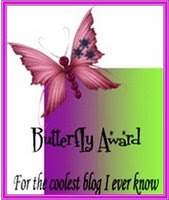
Joseph Pilates then went on to create " the six principles of pilates" in order to properly condition the entire body. They are breathing, centering concentration, control , precision and flowing movement.
Breathing enhances proper blood circulation, which in turn stimulates cells in the body and carries away wastes that can cause fatigue. For blood to function optimally, it has to be charged with oxygen and purged of waste through proper breathing. Full and thorough inhalation and exhalation are thus an integral part of every pilates exercise.
Centering involves the large group of muscles found in the center of the body, called the "powerhouse" in pilates- the abdomen, lower back, hips and buttocks. All the energy exerted doing pilates exercises begins from the powerhouse the "core"
Concentration demands careful attention and intense focus. Every position and movement of every part of the body is interrelated. Control simply means no unnecessary and uncontrolled movements.
Slower movements make your strength and coordination grow. Practitioners also perform every exercise with utmost control, in order to avoid injury. Precision aims to accomplish unified (flowing), precise and perfect movements through appropriate transitions, rather than many halfhearted or disjointed ones. The end goal is for precision to eventually become second nature, and carried over into everyday life as grace and economy movement. Once precision is archived the exercises are intended to flow within and into each other in order to build strength and stamina.
Josep Pilates once said " Physical fitness is the first requisite of happiness. In order to achieve happiness, it is imperative to gain mastery of your body. If at the age 30 you are still stiff and out of shape, you are old. If at 60 you are supple and strong, then you are young"
![Reblog this post [with Zemanta]](http://img.zemanta.com/reblog_e.png?x-id=4ea05480-7ffe-43f4-9934-ac9d3d5a5a19)

![Reblog this post [with Zemanta]](http://img.zemanta.com/reblog_e.png?x-id=4ee32c89-3148-437e-a3c0-5d3206ffbbcb)

![Reblog this post [with Zemanta]](http://img.zemanta.com/reblog_e.png?x-id=95c518a6-61e5-4c9c-9c03-13dc04256669)

![Reblog this post [with Zemanta]](http://img.zemanta.com/reblog_e.png?x-id=cc9f3f7e-5533-4c1f-8f3e-9dc879f5f576)

![Reblog this post [with Zemanta]](http://img.zemanta.com/reblog_e.png?x-id=f1f68695-3f08-46a9-b872-4b6d9bec67f9)

![Reblog this post [with Zemanta]](http://img.zemanta.com/reblog_e.png?x-id=5c11f391-3a42-40ca-9a78-0684f76e9d26)




















